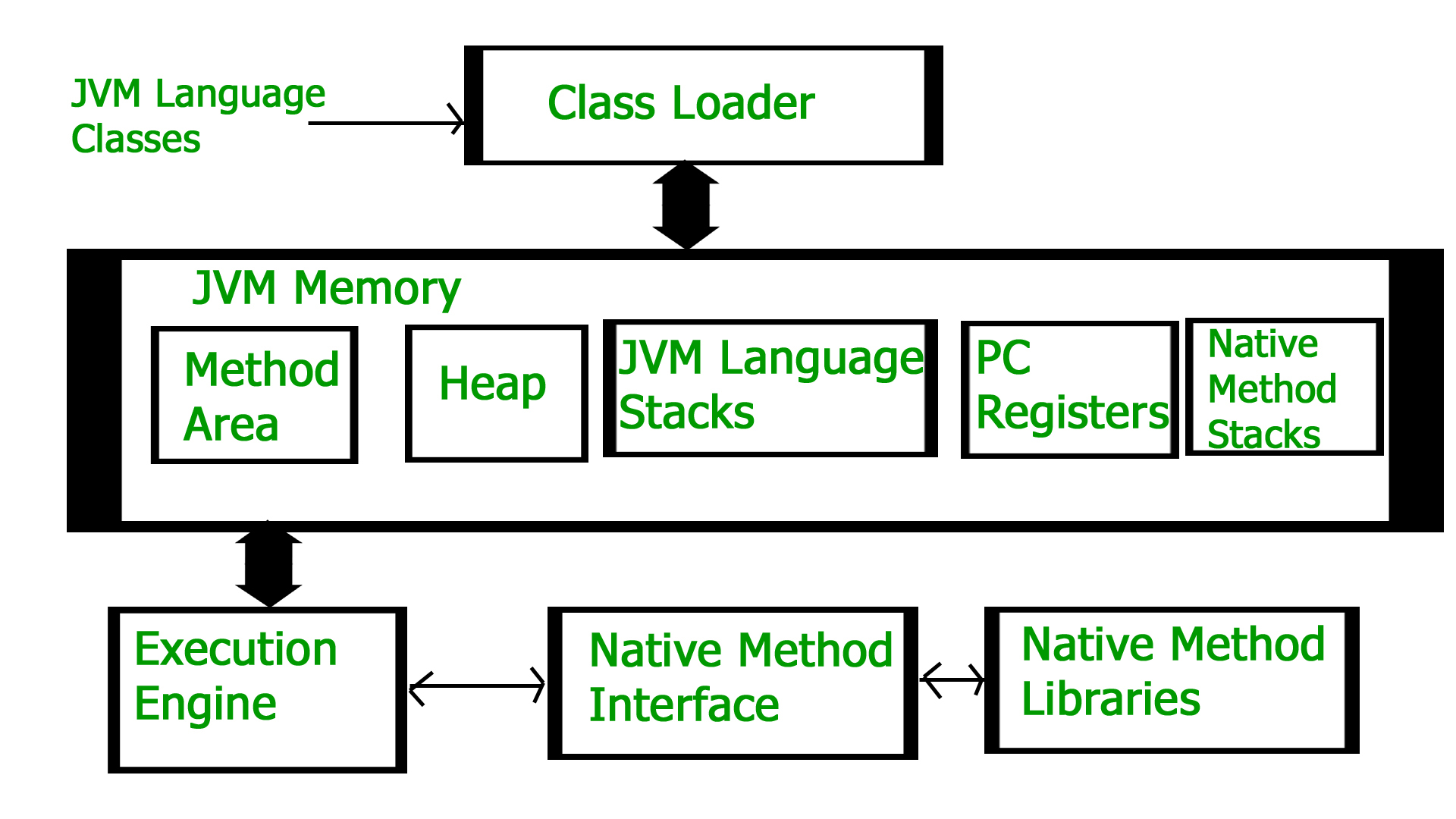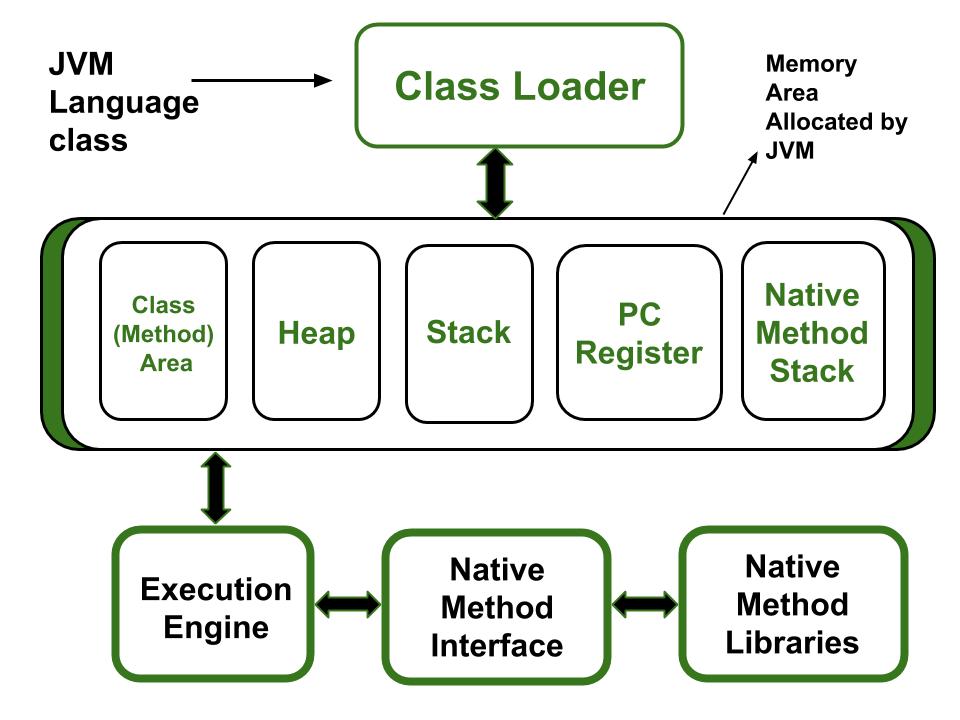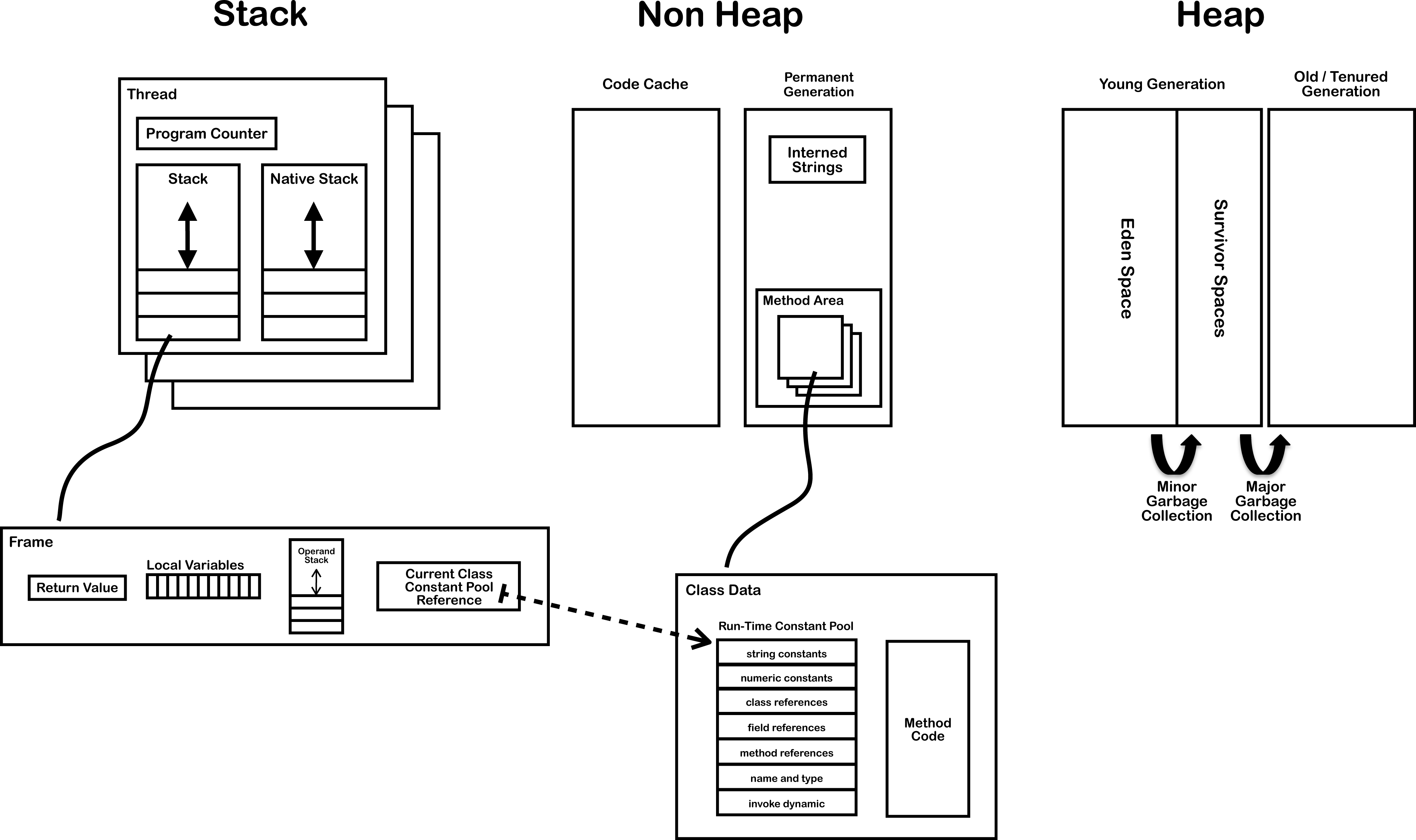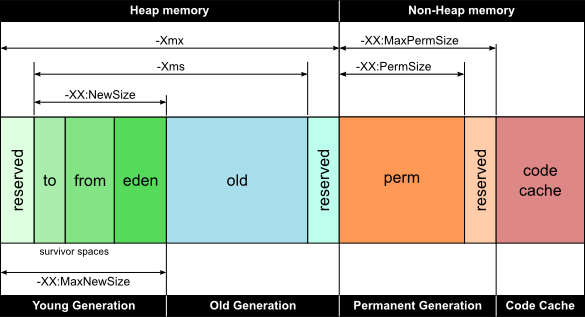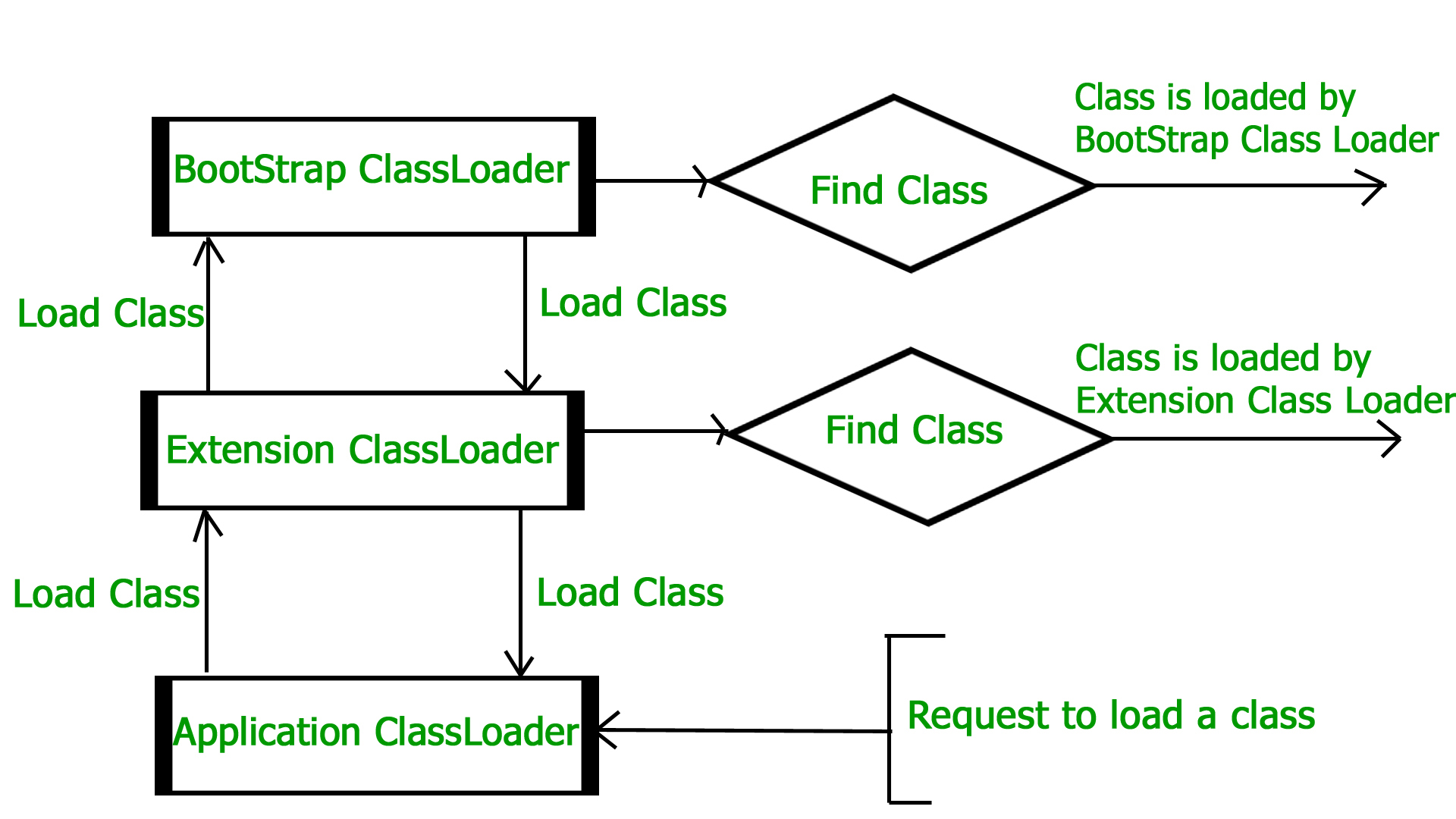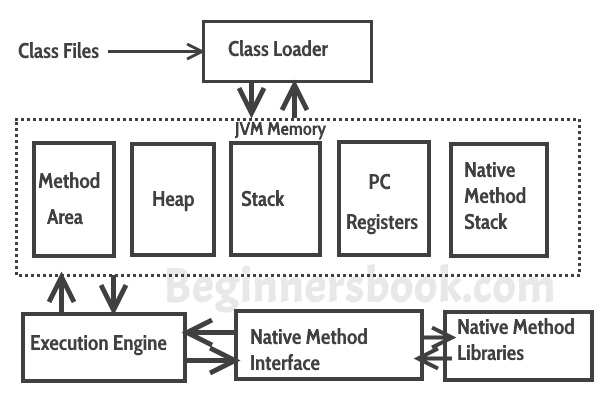Jvm Memory Diagram

Jvm memory method area in method area all class level information like class name immediate parent class name methods and variables information etc.
Jvm memory diagram. The java memory model used internally in the jvm divides memory between thread stacks and the heap. In this tutorial we ll discuss these memory models. There is also one heap. To run an application in an optimal way jvm divides memory into stack and heap memory.
This diagram illustrates the java memory model from a logic perspective. In this article i will explain the main components of jvm including memory management class loading and the garbage collector. The java memory model describes how threads in the java programming language interact through memory. The java virtual machine s pc register is wide enough to hold a return address or a native pointer on the specific platform.
There are multiple implementations of jvm from different vendors for variety of platforms. We learned about java memory model and its memory area and structuring inside jvm. Each thread running in the java virtual machine has its own thread stack. We will come up with ideas to use this information for performance tuning in the coming posts.
It provides you with environment to execute your compiled programs called bytecode. Jvm stands for java virtual machine. There is only one method area per jvm and it is a shared resource. The original java memory model developed in 1995 was widely perceived as broken preventing many runtime optimizations and not providing strong.
Heap area information of all objects is stored in heap area. This post explores the jvm architecture what it is how it operates why it s useful and presents a helpful diagram that highlights major jvm functionalities.
